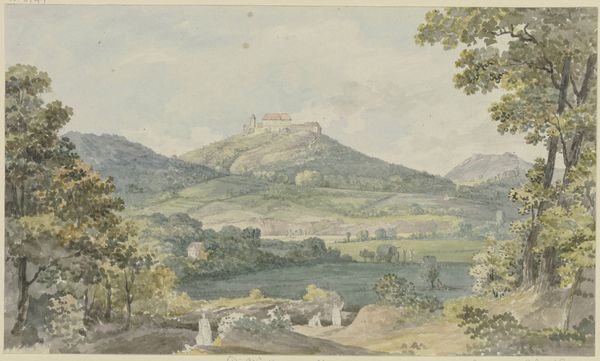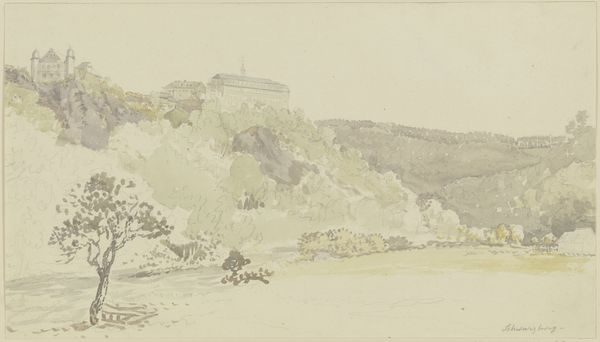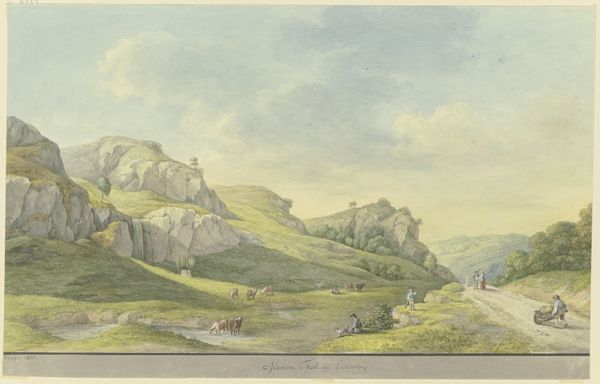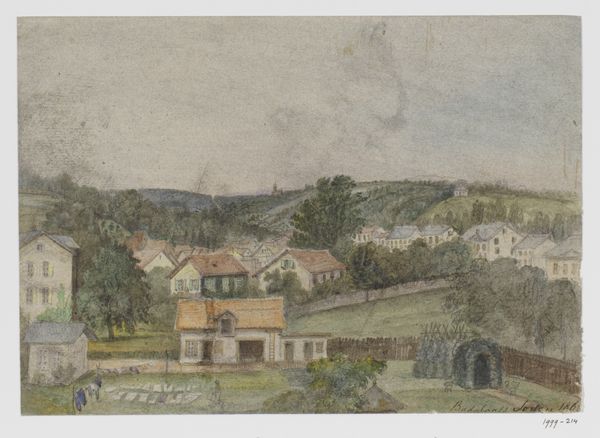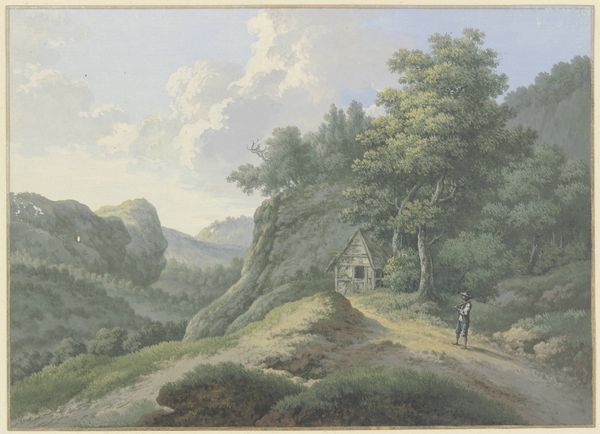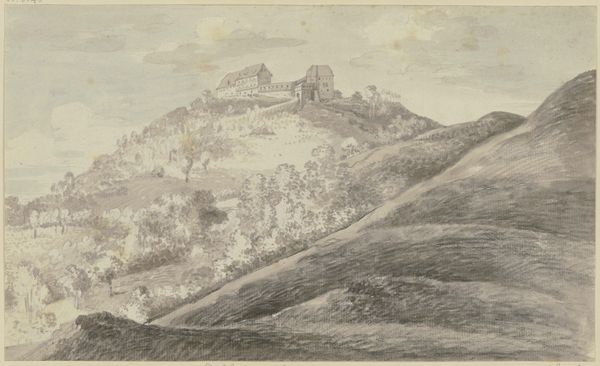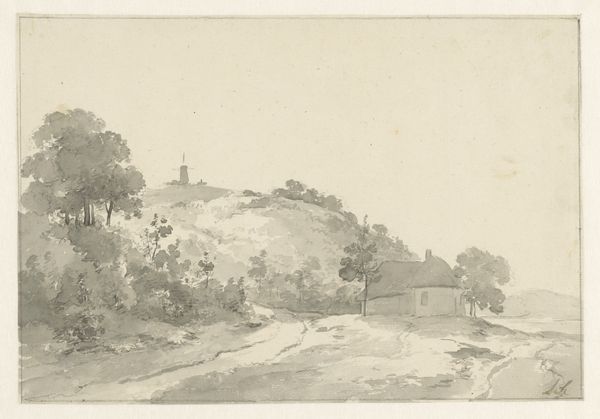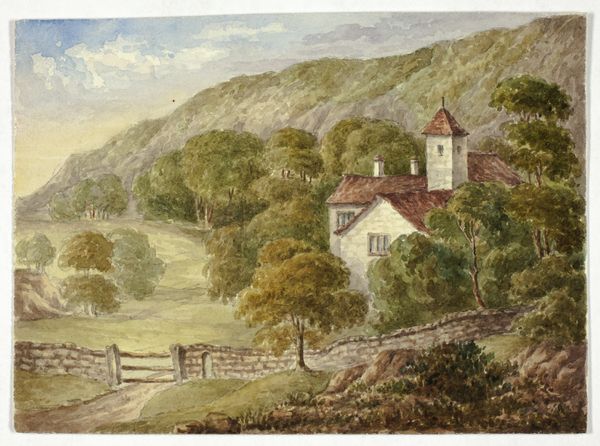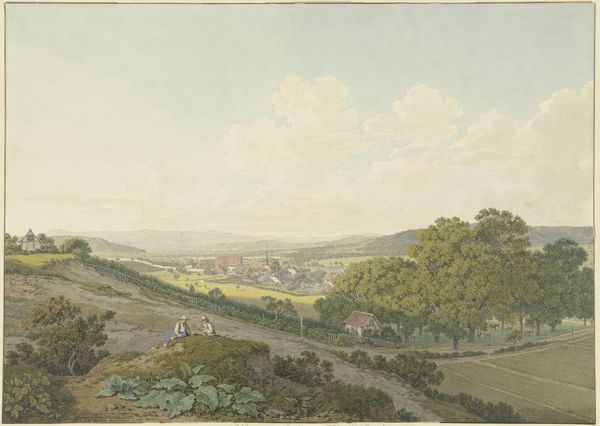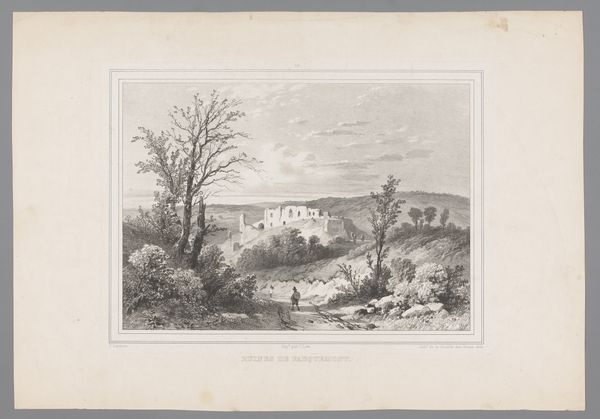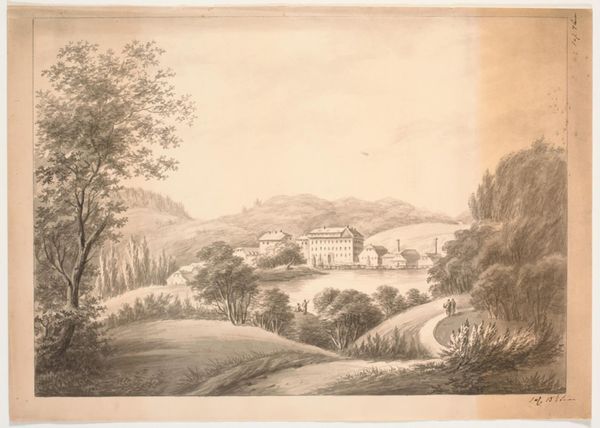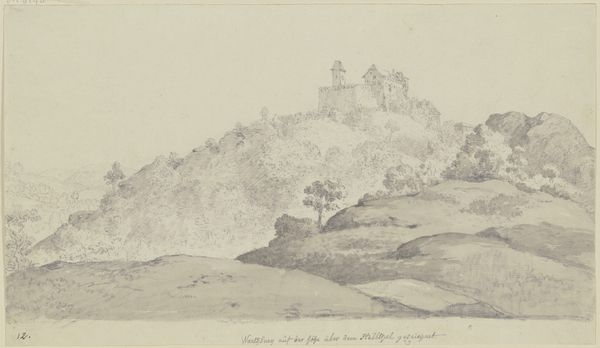
drawing, watercolor, pencil, graphite
#
drawing
#
neoclacissism
#
pencil sketch
#
landscape
#
watercolor
#
romanticism
#
pencil
#
graphite
#
watercolour illustration
#
watercolor
Copyright: Public Domain
Editor: Here we have Georg Melchior Kraus's "View of the Wartburg," created around 1790 to 1794 using pencil, graphite, and watercolor. There’s a dreamlike quality to the soft washes of color, yet the architectural details are rendered with surprising precision. What do you see in this piece from a formalist perspective? Curator: Focusing on the composition, observe how Kraus employs a structured layering of forms. The eye is led from the darker, loosely defined trees in the foreground to the solid geometric mass of the castle perched atop the hill. The relationship between these elements—the organic and the constructed—creates a tension that defines the aesthetic experience. Editor: That tension is interesting. The foreground seems almost unfinished compared to the clarity of the castle itself. Curator: Precisely. Consider the use of line versus wash. The castle is delineated with sharp, controlled lines, giving it a sense of permanence. The landscape, however, is rendered in soft, atmospheric washes, almost dissolving into the background. Notice too, the limited color palette; how does this contribute to the overall structure of the work? Editor: The limited palette—mostly greens and browns—creates a sense of unity and focuses the attention on the contrasting forms. Curator: Exactly. And how does that structured use of color impact our understanding of depth? Kraus uses lighter tones to push the castle into the distance, creating spatial recession not through atmospheric perspective alone, but through the strategic deployment of value. Editor: So it's about the interplay of these formal elements, rather than any symbolic meaning? Curator: The formalism resists the imposition of narratives or symbolism. It instead emphasizes the work as a self-contained aesthetic object. What are the internal relations of form, how does it achieve this aesthetic? Editor: That clarifies things considerably. It’s less about what the Wartburg represents and more about how Kraus has visually constructed this scene. Curator: Indeed. Appreciating the drawing becomes about understanding how its component parts contribute to its formal unity and artistic effect. I see that now. Thanks!
Comments
No comments
Be the first to comment and join the conversation on the ultimate creative platform.
